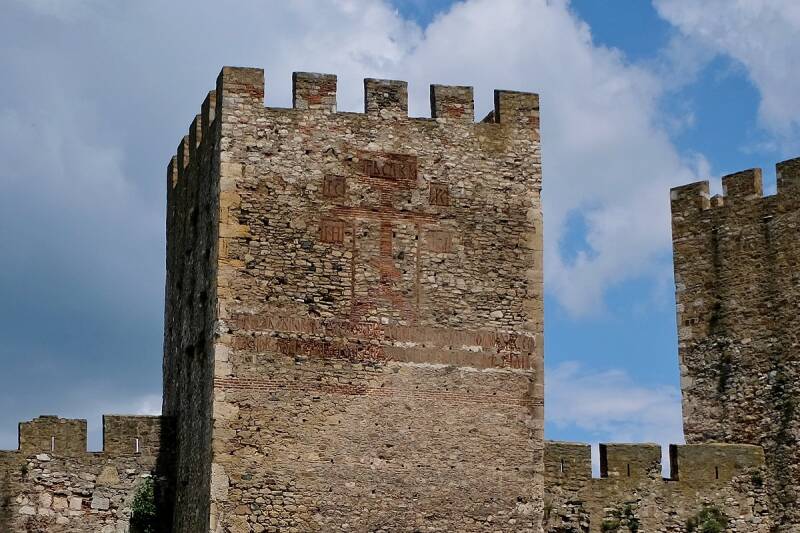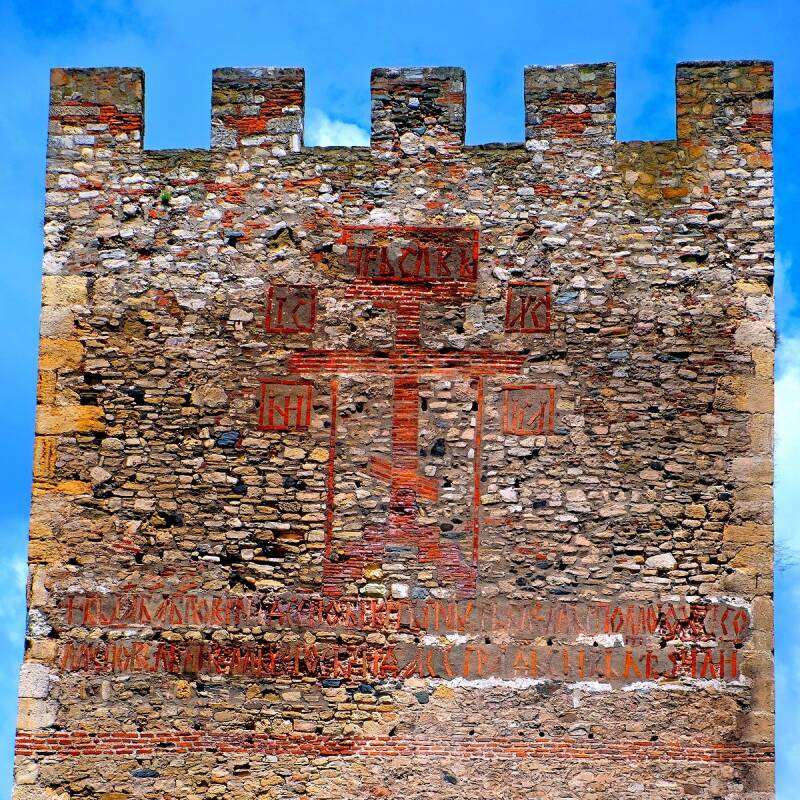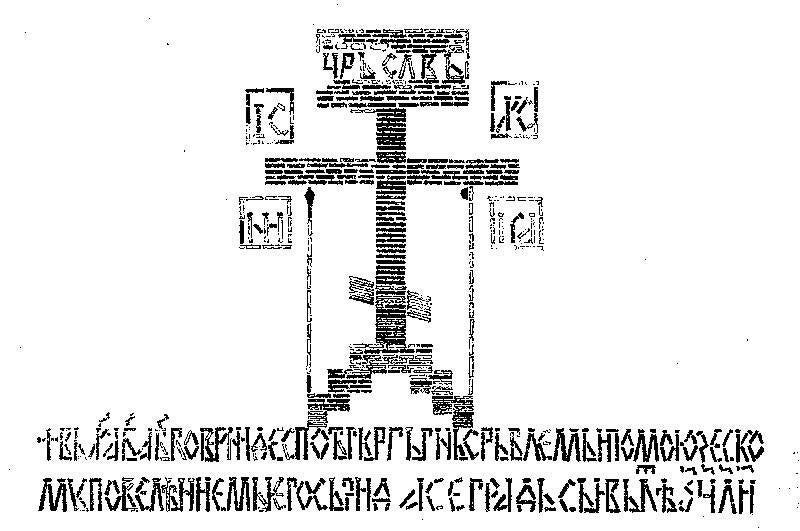lighteye
The oldest calendar in the world
[Текст на српском] Let’s not fool ourselves — we live in a repressive hierarchical political matrix that falsifies history. And it’s very effective at it. It is able to hide even what is in front of your eyes for centuries…
This is the Small Fort of the ancient Smederevo fortress. A Citadel. The court of Despot Đurađ Branković, whose construction was completed in 1430.

Foto by Lighteye
The inscription on construction of the Small Fort was made in the Byzantine style, with red brick on the face of the highest tower of Small Fort. At the chart of the Smederevo fortress, this tower is located exactly above the number 11:

Let's get a little closer and see what's written on the tower:

Foto by Lighteye
Let's get a little closer and see what's written on the tower:

Foto by Lighteye
It's still not quite clear. We will enhance colors to make the inscription more visible:

But behold! There is no mention of 1430 at all! It says something completely different here:

The translation from the language Serbs have spoke before the language reform reads as follows:
“To Christ God devoted Despot Đurađ, the Lord of Serbs and of Zeta littoral. This fort was built at his order in the year 6938”
6938 !
If 6938 was 1430, then the Battle of Kosovo happened in 6897… then instead of 2019, it is actually 7527th year! Just imagine, a calendar older than a Sumerian inscriptions! According to this calendar, the year is counted from the Great Flood, which according to the tradition, occurred in the year 5508 before the birth of Christ. Its origin dates back to the time of Vinča culture, which is, in fact, the source civilization of all Slavs, and whose letter is Cyrillic, as Radivoje Pesic, professor of palaeolinguistics, has scientifically proven (text in Serbian) In support of this, the discovery of documents shows that the time was measured with almost identical calendar in the territories of today's Bulgaria and Ukraine.
In the territory of Serbia, this ancient calendar was in use and after Saint Sava wrote the Legislation (the first Constitution of the Serbian Orthodox Church, 1219 or 6727), in which, among other things, he made the Serbian national calendar official, changing however national names of the month to those from the Gregorian calendar. How were the months called by the people? (text in Serbian)
In Slavic countries, the national names of the month are obviously similar (text in Serbian), but there are deviations due to different climatic conditions. For example, since the linden flourishes a month earlier in the south than in northern Europe, the Croats have the name of Lipanj for June, and the Poles for July.
Gregorian
Januar
Februar
Mart
April
Maj
Jun
Jul
Avgust
Septembar
Oktobar
Novembar
Decembar
Serbian
Кoložeg
Sječko
Derikoža
Ležitrava
Cvetanj
Trešnjar
Žetvar
Gumnik
Grozdober
Šumopad
Studen
Кoledar
Croatian
Siječanj
Veljača
Ožujak
Travanj
Svibanj
Lipanj
Srpanj
Кolovoz
Rujan
Listopad
Studeni
Prosinac
Church
Bogojavljenski
Sretenjski
Blagoveštenjski
Đurđevski
Carski
Petrovski
Ilinski
Gospođinski
Miholjski
Mitrovski
Mratinjski
Božićni
The calendar distinguished two seasons — Summer, the period of vegetation (“from Đurđev’s to Mitrov’s day”), and Winter, the period of nature’s hibernation, from the beginning of November to the beginning of May.
As a comparison, documented calendars — that is, not just assumption that something could be a calendar — which were used in other parts of the World after our, go in this order:
Jewish calendar
Chinese calendar
Islamic calendar
Lunar calendar from Myanmar
- 5776 years.
- 4713 years.
- 1434 years.
- 1378 years.
The oldest preserved documents with the use of this calendar are the Studenica's tipik (Church Constitution) from 1195 (i.e., 6703) and the Kareian tipik of Saint Sava from 1199 (or 6707).
However, the most memorable document in front of the eyes of the whole World, certainly is a tower in the fortress of the then Capital Serbian city of Smederevo.

